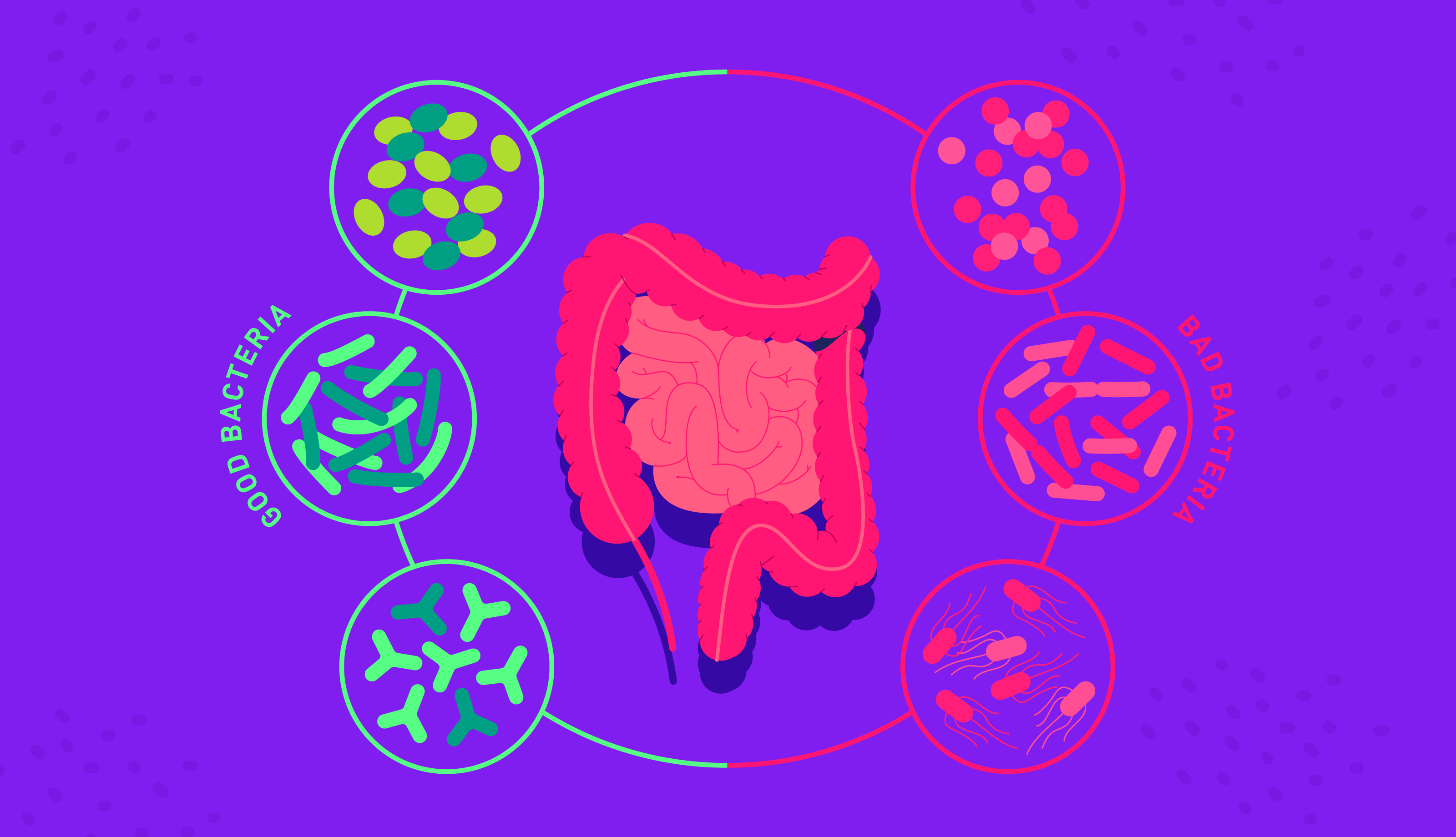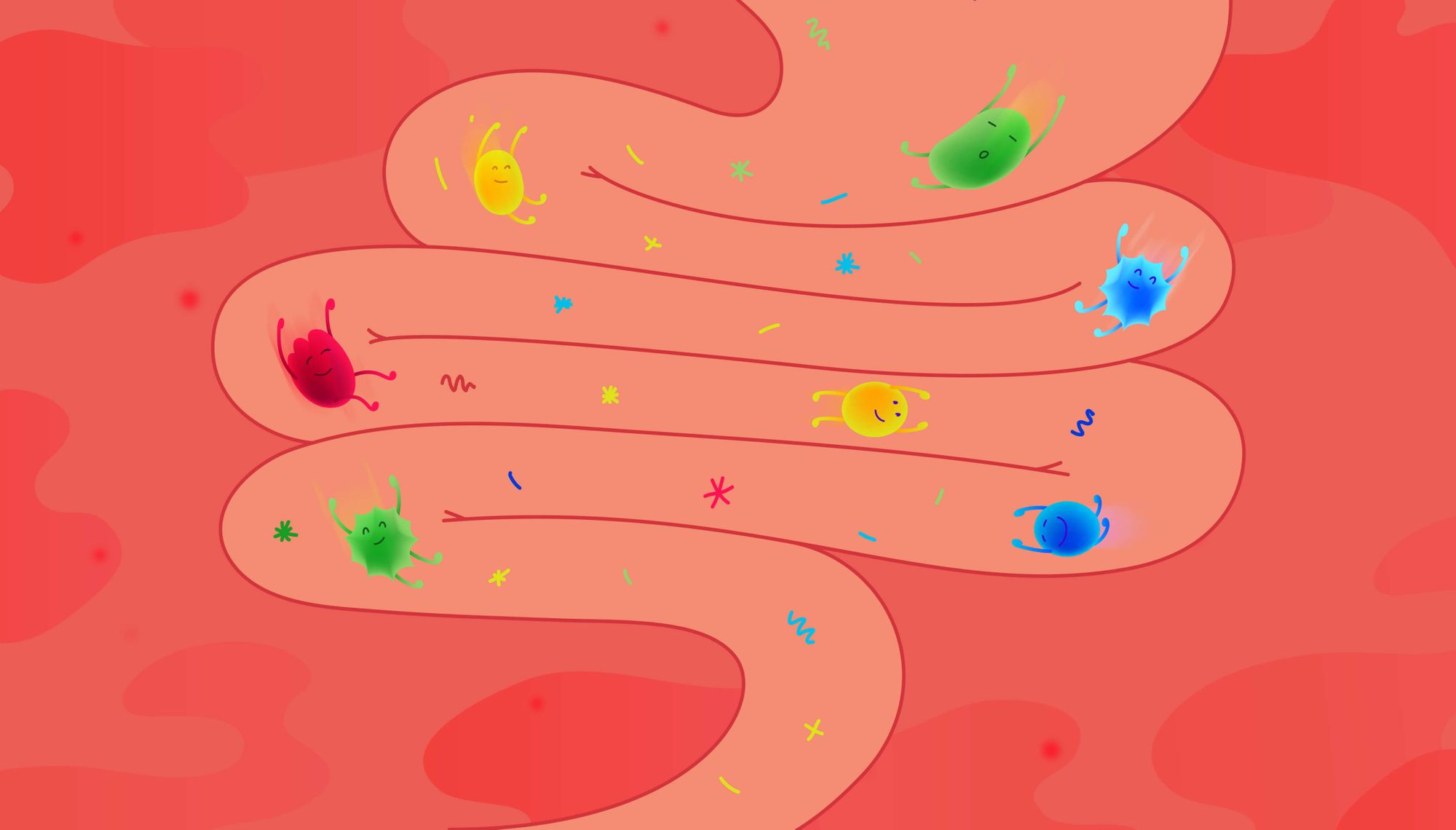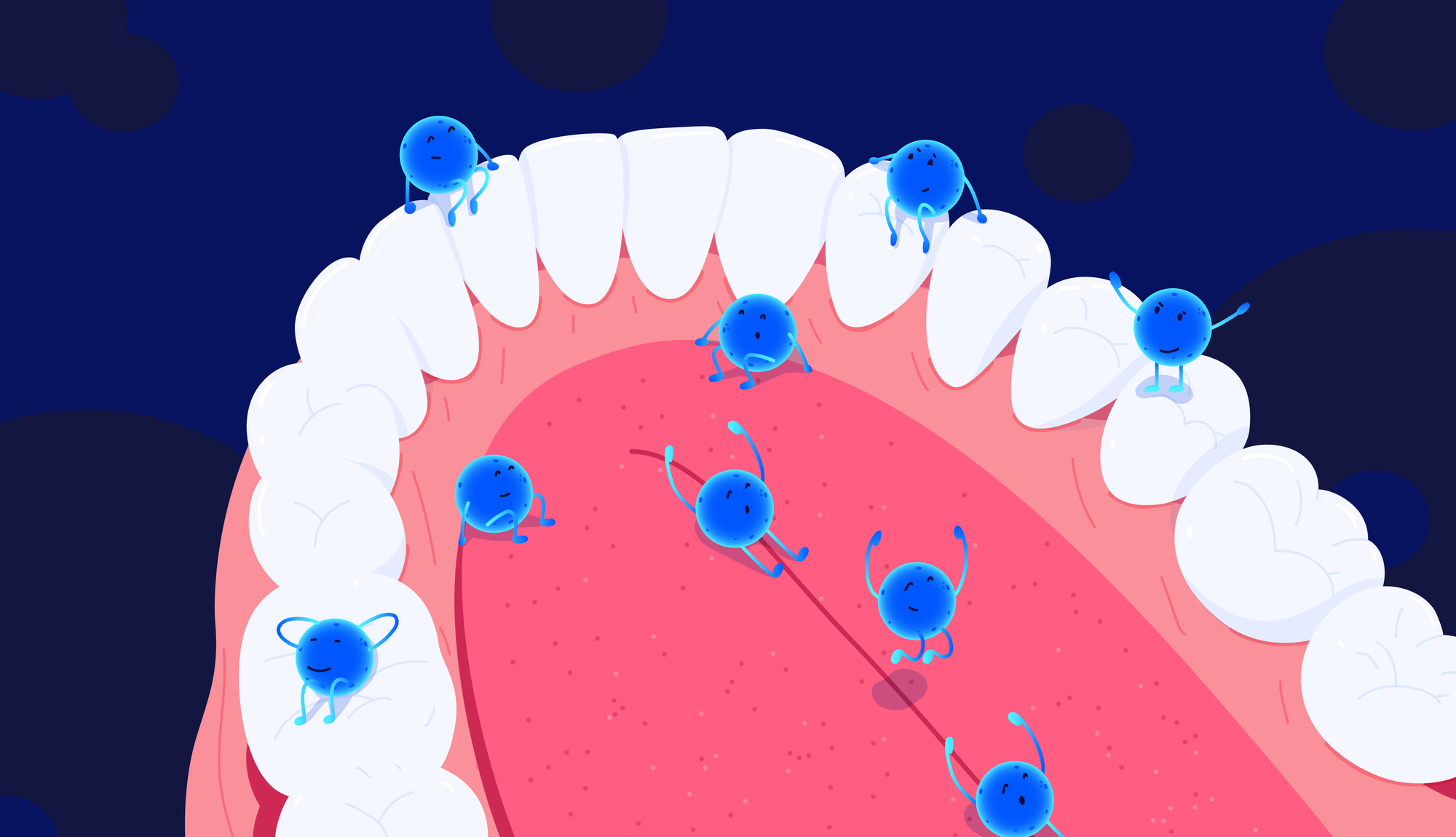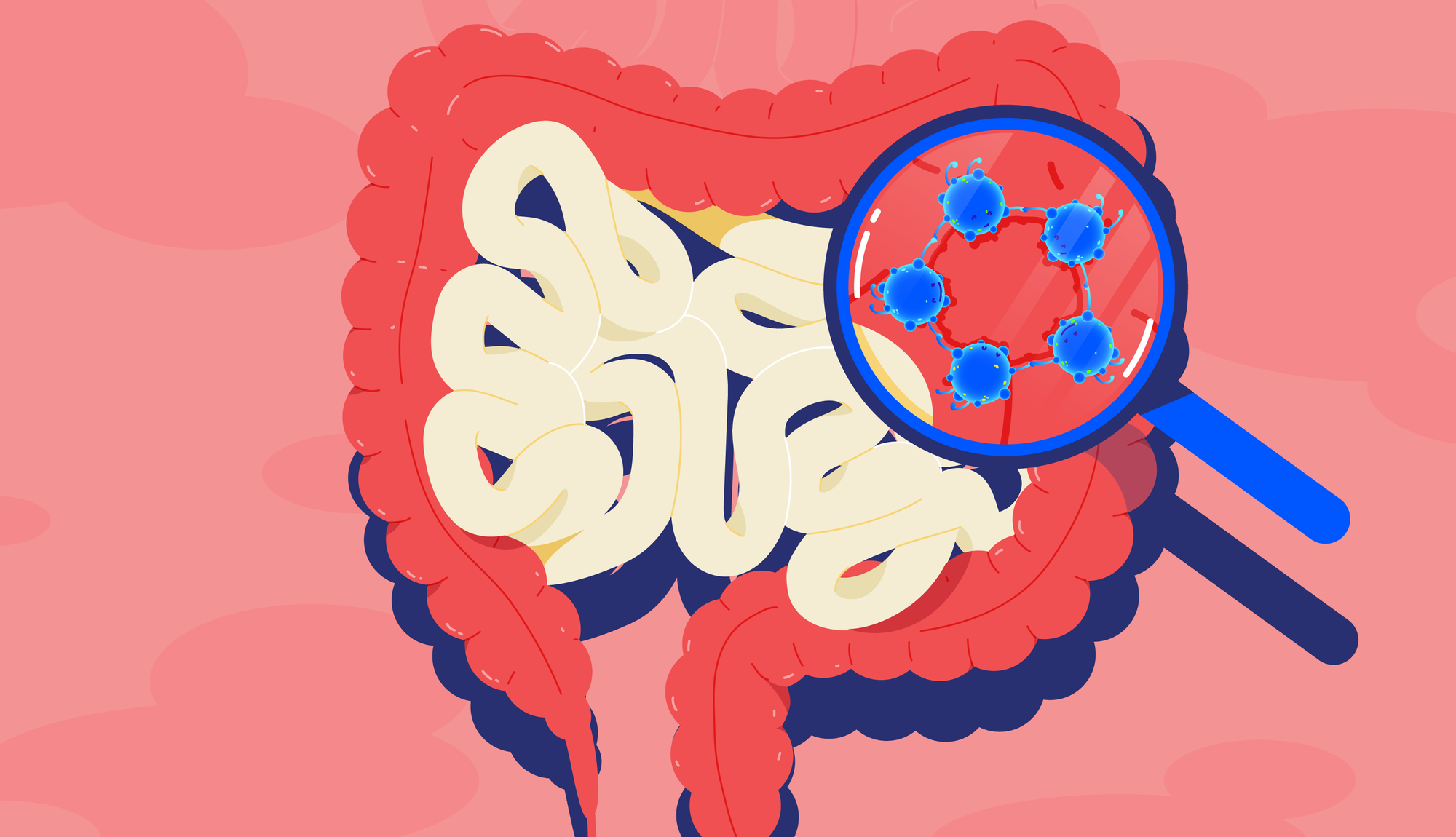You share your body with trillions of microscopic organisms. When they don’t get along, it’s called “dysbiosis”, and it has knock-on effects for your health.
Dysbiosis is a modern-day problem that emerged when scientists discovered the astounding variety of microbes living on and in the human body. For the most part, these single-celled organisms are harmless (some are even good), and they live in symbiosis with you, the host.
But microbes are sensitive little creatures, and their harmonious communities can be easily knocked off balance. This makes it easier for less friendly bugs to take over and do whatever suits them best – which is not always what your body needs. This is the simplified definition of dysbiosis.
In this article, you will get to grips with the causes of dysbiosis and its symptoms, testing, and treatment. You’ll discover that dysbiosis is a surprisingly common problem, and why researchers are still a bit fuzzy on which comes first: dysbiosis or illness.
☝️DISCLAIMER☝This article is for informational purposes only. It is not intended to constitute or be a substitute for professional medical advice, diagnosis, or treatment.
Table of contents
- What is dysbiosis
- Fungal dysbiosis
- Gut dysbiosis
- Dysbiosis causes
- Symptoms of dysbiosis
- Dysbiosis tests
- Treatment and diet
- Other types of dysbiosis
- Skin dysbiosis
- Oral dysbiosis
- SIBO dysbiosis
- Candida dysbiosis
What is dysbiosis?
Dysbiosis is defined as negative alterations in your body’s microbial communities, which are associated with health problems and diseases. There are two main types of dysbiosis: bacterial and fungal. However, dysbiosis is not a medical condition.
Dysbiosis is a catch-all term because there is no “perfect” microbiome. Every human is unique, and that means that every microbiome is unique too. However, researchers have identified some broad signs of dysbiosis that are related to the quantity of certain microbes in relation to others:
- overgrowth of some bacteria or yeasts
- absence or insufficiency of beneficial bacteria
- low diversity of species in the microbiome
Fungal dysbiosis
The body is home to small quantities of yeasts too, which are for the most part harmless. Nevertheless, fungal overgrowth is a common cause of ear infections, athlete’s foot, thrush, and vaginal infections – many of which are caused by Candida yeasts and Aspergillus molds.
☝️TIP☝️ The meaning of dysbiosis comes from ancient Greek: dys- (bad or ill) and biosis (way of living).
What is gut dysbiosis?
The most famous microbial ecosystem is the gut microbiome. Located in your large intestine, it contains trillions of bacterial cells that work with your bowel to keep it healthy. There are also some yeasts, fungi, and archaea in there too.
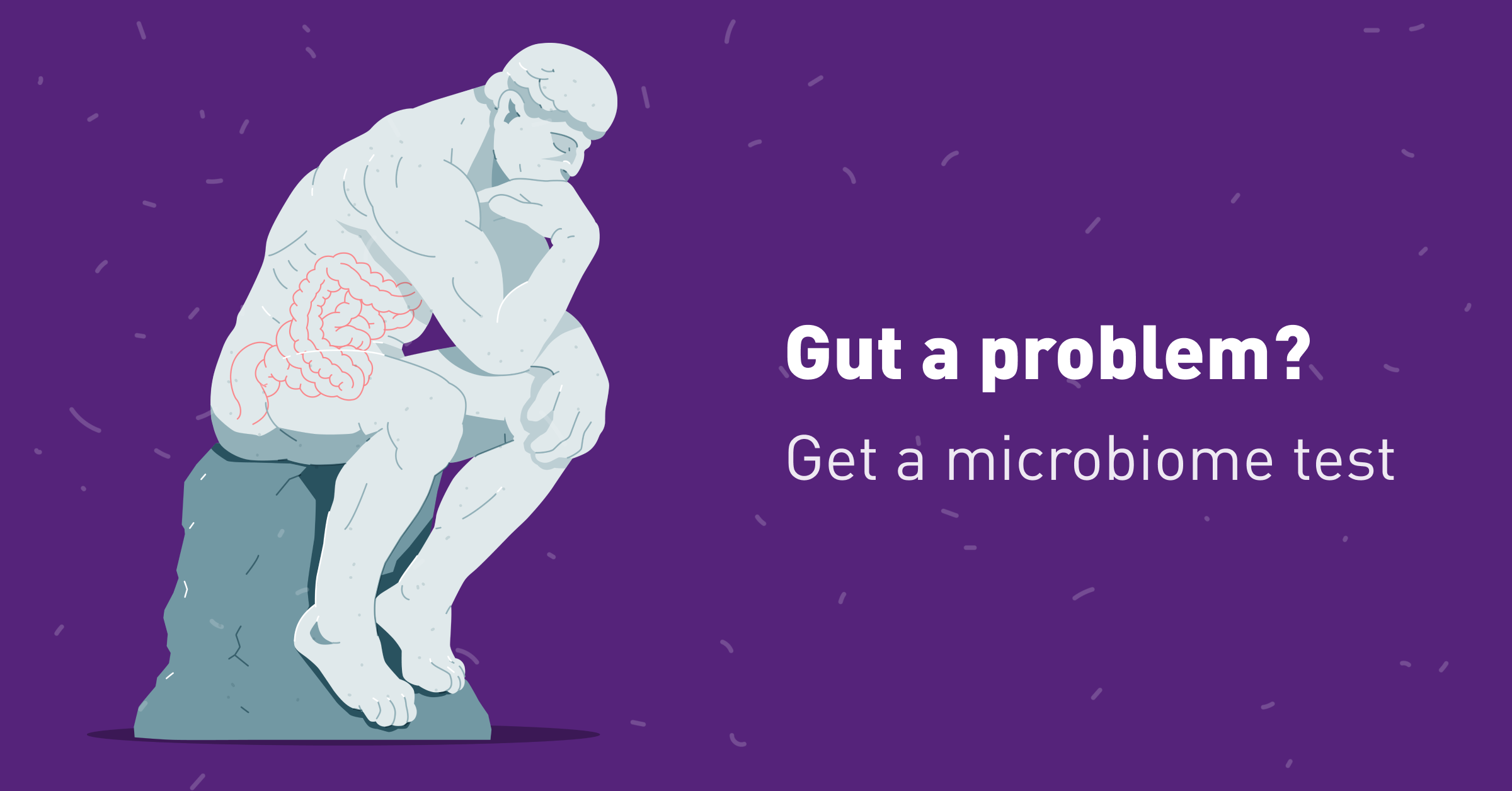
A healthy and balanced microbiome has enough of the right bacteria to produce important nutrients that keep the gut lining healthy and defend against intruders that could cause dysbiosis by taking over the ecosystem.
Diversity is a key metric for measuring gut microbiome dysbiosis. Over 1,000 different species of bacteria are present in a healthy microbiome. They keep foreign bacteria and potentially infectious microbes in check, so they can’t multiply and make you sick.
What causes gut dysbiosis?
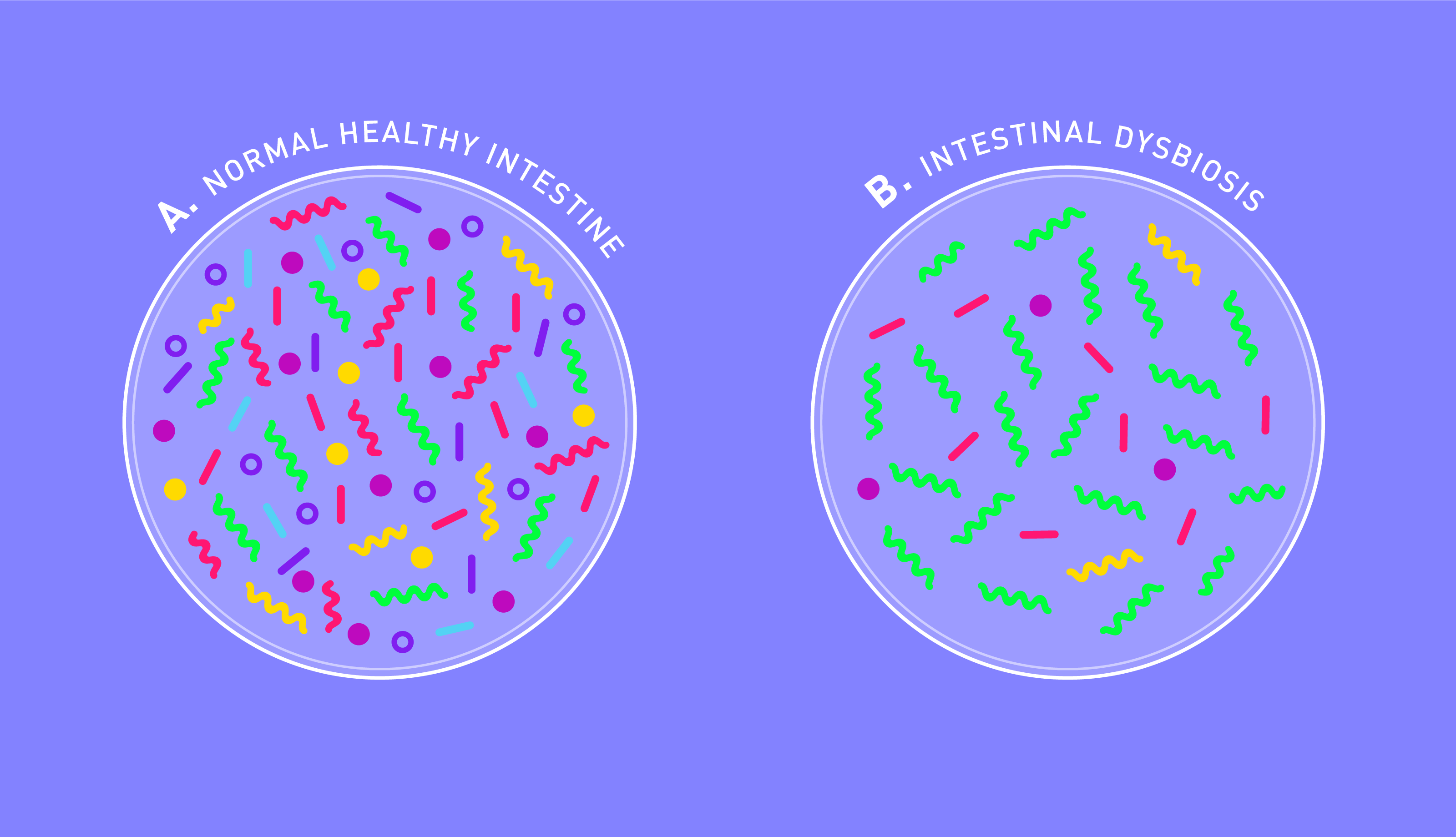
There are lots of factors in your everyday life that can influence colonic dysbiosis and microbiome health, the biggest one being antibiotics. Even just one course of antibiotics can cause dysbiosis that lasts for months. Taking antibiotics many times can even permanently disturb the gut microbiome.
Other factors associated with intestinal dysbiosis include your diet and lifestyle. Partying every night and living off fast-food and sugary beverages won’t do your gut any favours, but eating lots of whole foods, fruits and vegetables, and getting regular exercise will.
It’s practically impossible to determine if dysbiosis is part of the problem, or just a consequence of being sick. Researchers believe that it's probably a vicious circle in which the gut microbiome and the body create the conditions for illness.
Indeed, being sick (and even taking medication) can affect the microbiome, causing dysbiosis, which then feeds into the illness. Equally, it's believed that dysbiosis may cause metabolic problems for the body, which increase a person's susceptibility to disease later on.
Dysbiosis symptoms
Gut dysbiosis symptoms are very vague, and overlap with many common health problems, including irritable bowel syndrome, inflammatory bowel disease, and celiac disease. Research also shows that dysbiosis is a risk factor for developing these conditions.
Common gut dysbiosis symptoms:
- flatulence
- bloating
- abdominal pain
- diarrhea
- constipation
Just remember, if you have symptoms of intestinal dysbiosis, you should always consult a doctor for diagnostic testing to make sure you don’t have a serious health problem.
Dysbiosis tests

Dysbiosis is a word used to describe a functional state - it is not a diagnosis because it is not considered a health condition.
If you want to check for gut dysbiosis, you can take a gut microbiome test, like the Atlas Microbiome Test. They’re not specifically called gut dysbiosis tests because they analyse many features of the intestinal microbiota, not just dysbiosis.
You can order the Atlas Microbiome Test online right now and get a collection kit delivered to your door. All you have to do is collect a small stool sample and get it back. Your sample is analysed at a lab to identify the bacteria in your gut and how they influence your health.
| Report | What you'll learn |
|---|---|
| Microbiome diversity | Find out how diverse your gut microbiome is, and whether dysbiosis is a problem. |
| Beneficial bacteria | Discover the good bacteria in your gut and if you have enough to protect against dysbiosis. |
| Butyrate levels | Discover if your bacteria produce enough butyrate to keep your gut healthy. |
| Dietary fibre metabolism | Reveal how good your gut microbes are at breaking down different dietary fiber. |
| Disease protection | See how your gut microbes protect you from 5 diseases linked to dysbiosis. |
| Vitamin synthesis | Find out if your microbes produce enough B and K vitamins to feed the community. | Dysbiosis diet | Discover personalised food lists every week to recover your gut microbiome and tackle dysbiosis. |
Even though there is no universal definition of dysbiosis, there is enough evidence to know what a balanced microbiome looks like. And that’s why gut microbiome tests are a good option if you’re concerned about dysbiosis.
Diversity test for dysbiosis
Microbiome tests are the best way to check your microbiome diversity – a primary indicator of health – which indicates whether your gut bacteria are happy and balanced, or if there is an overabundance of some bacteria and not enough of others.
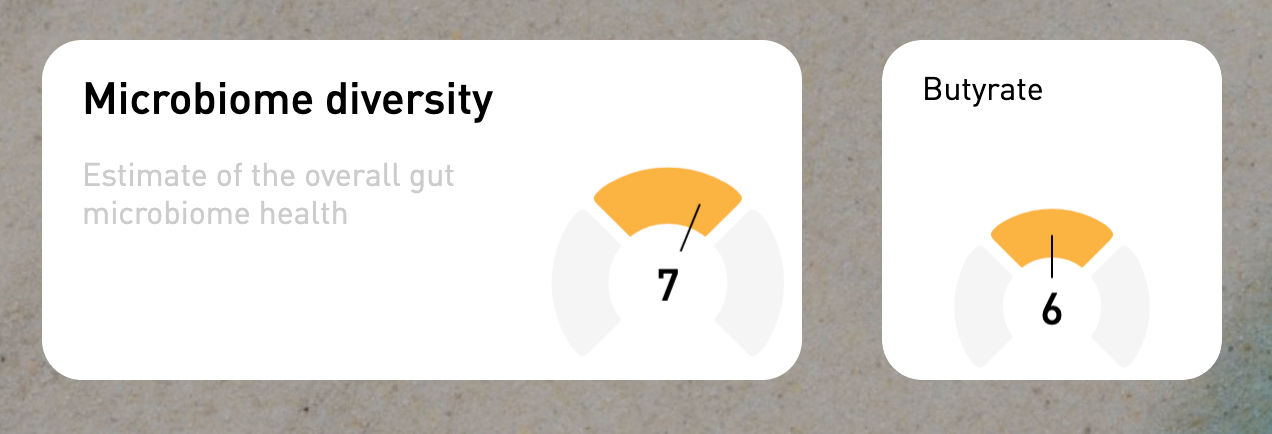
When you don’t have enough beneficial and probiotic bacteria in your gut, you are more susceptible to dysbiosis. That’s why the Atlas Microbiome Test also checks the abundance of probiotic bacteria, like Lactobacillus and Bifidobacteria, and other beneficial bacteria in your gut.
Nutrient test for dysbiosis
Tests like the Atlas Microbiome Test can estimate the level of butyrate (a critical short-chain fatty acid) produced by your bacteria to support your gut health. Gut microbes also make vitamins that nourish other bacteria, and you can see how your microbiome is doing here too.
Disease protection status
Dysbiosis is often observed in serious illnesses, and our microbiome test can evaluate how similar or different your gut microbiome is to five common diseases:
- Crohn’s disease
- Ulcerative colitis
- Obesity
- Heart disease
- Type II diabetes
Gut dysbiosis treatment
Dysbiosis treatment should be tailored to each person using the results of a gut microbiome test. The gut dysbiosis protocol may include a combination of dietary changes, probiotic supplements, and lifestyle modifications to create optimal conditions for beneficial bacteria to thrive.
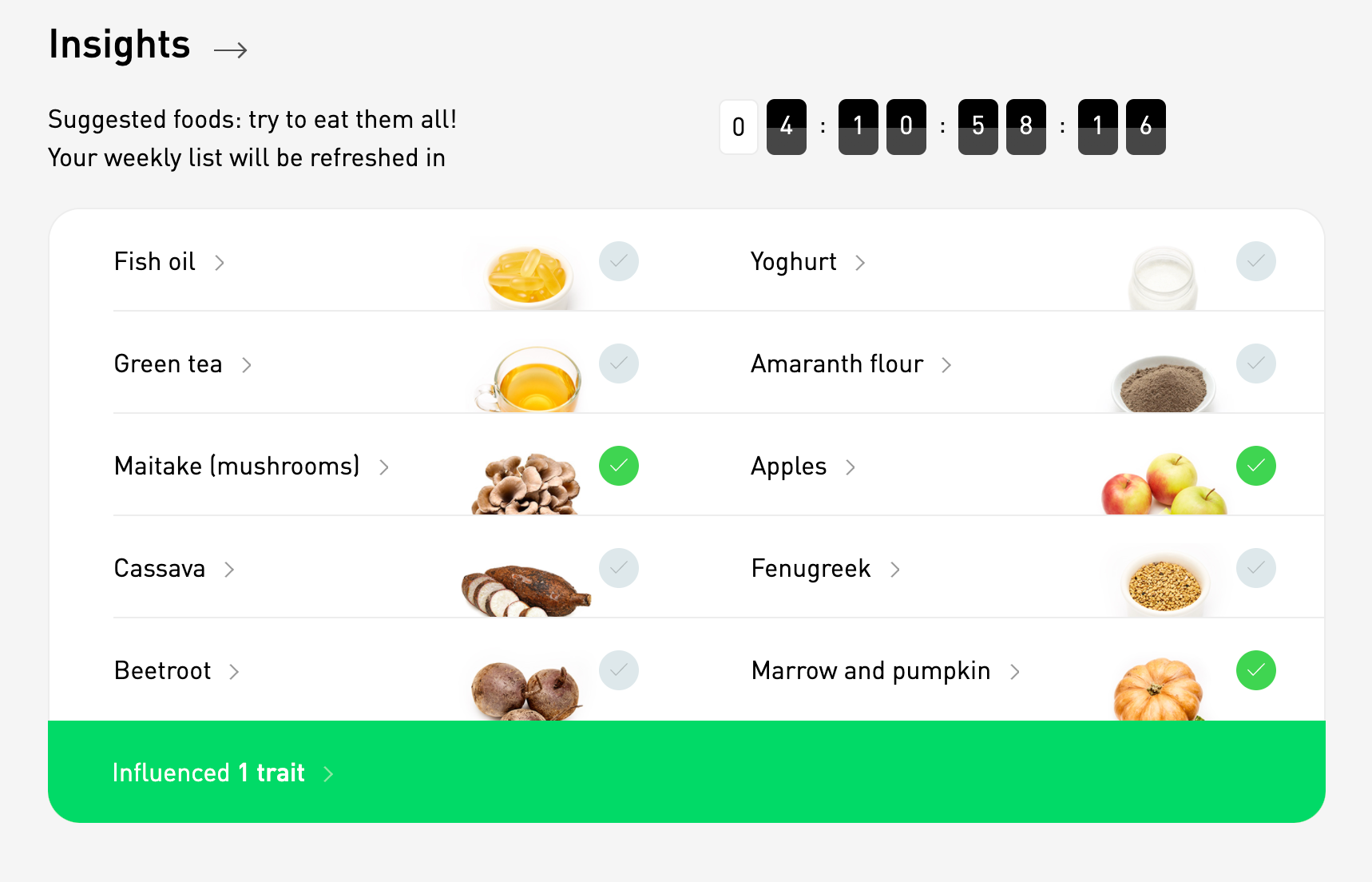
There is no drug that can treat gut dysbiosis symptoms, and treatment is usually developed on a case-by-case basis. For mild microbiome imbalances identified by the Atlas Microbiome Test, your weekly food recommendations are a dysbiosis treatment diet.
By feeding your microbiome with prebiotic foods, you will nourish the beneficial bacteria in your gut so they can thrive and restore balance in the ecosystem. Prebiotics is just a fancy word for plant foods because good gut bacteria feed on dietary fibers and plant nutrients.
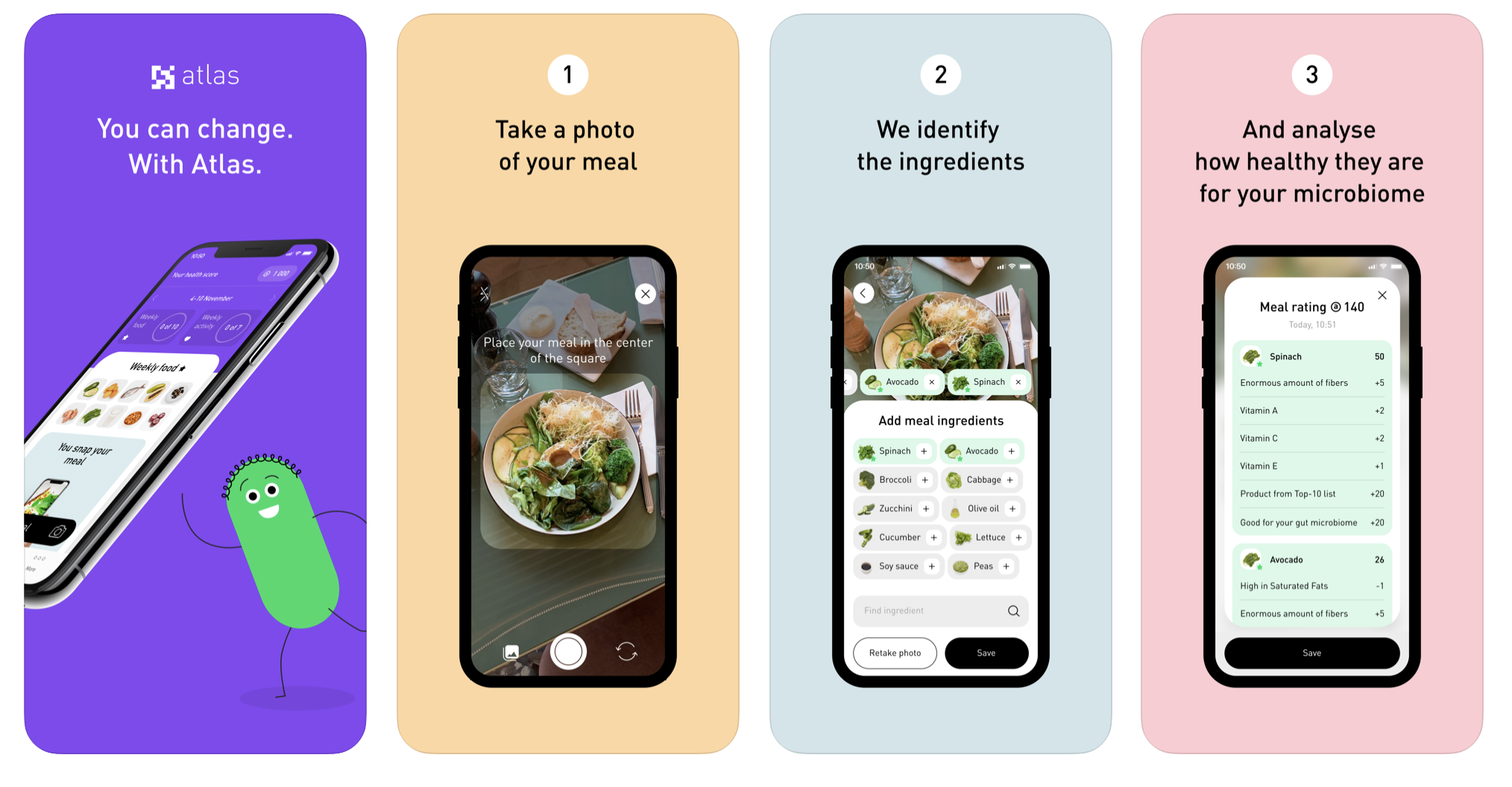
This personalised dysbiosis diet is a natural treatment for dysbiosis that doesn’t require any supplements or medication. All you have to do is follow your weekly food recommendations and record your progress on the Atlas Health app.
This app has an integrated scoring feature to rate your meals based on how microbiome-friendly they are to help you stay on track with your intestinal dysbiosis diet. Plus, you can earn a free nutritionist consultation and ask a professional for advice.

You can even track how effective your intestinal dysbiosis treatment diet is with our subscription feature. Take an Atlas Microbiome Test every three months to see how your microbiome changes and responds to improvements in your food choices.
Other types of dysbiosis
Dysbiosis doesn’t just affect your large intestine. It can affect any body part that has its own special ecosystem of microbes because bacteria are everywhere from your mouth to your urinary tract.
Skin dysbiosis
Your skin alone has several niche microbiomes that depend on the local environment. For example, microbes that enjoy the greasy skin of your nose probably won’t enjoy your sweaty armpits as much.
Indeed, some studies have shown that dandruff and seborrheic dermatitis (itchy rash with flaky scales) is linked to fungal and bacterial dysbiosis. Atopic dermatitis, better known as eczema, has also been linked to skin microbiome dysbiosis.
Oral dysbiosis
Oral dysbiosis is another common problem which can have serious consequences. Gingivitis and periodontitis (two stages of gum disease) are both linked to mouth dysbiosis caused by a bacterium called Porphyromonas gingivalis.
An overgrowth of P. gingivalis means that these microbes can travel with your saliva into your digestive tract where it can trigger your immune system, causing chronic inflammation and dysbiosis of the gut microbiome.
Small intestinal bacterial overgrowth (SIBO)
Your intestines come in two parts. The small intestine extracts most of energy and nutrients from your food, while the large intestine absorbs water, electrolytes and some other nutrients, and gets rid of waste products.
SIBO is a type of dysbiosis in which bacterial overgrowth leads to excess production of methane or hydrogen. These gases influence the cells of the intestinal lining, causing bloating, abdominal pain, gassiness, diarrhea, and sometimes constipation.
Candida dysbiosis
Candida is a generally harmless yeast that sometimes grows out of control and takes over the local microbiome with uncomfortable side effects. Candida overgrowth is a form of dysbiosis known as candidiasis.

Candida yeasts can cause oral thrush – a fungal dysbiosis of the mouth – with unpleasant symptoms like soreness, white or yellow patches that bleed when scraped, an unpleasant taste in the mouth, dryness, and cracks in the sides of your mouth.
Another common type of candida fungal dysbiosis only affects women: yeast infections. The vaginal microbiome is dominated by Lactobacillus bacteria which keep the environment acidic to deter pathogens. When this ecosystem is disrupted (by antibiotics for example), candida yeasts can take over and cause a vaginal infection.
☝️FACT☝️ Microbiome tests cannot show you if you have a fungal overgrowth, skin dysbiosis, or a parasitic infection.

